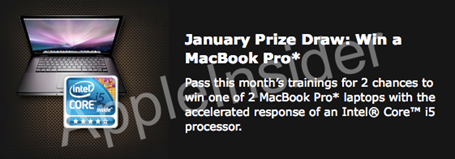
NASA's newest supercomputer at Ames Research Center, Moffett Field, Calif., has garnered the number three spot on the Top500 list of the world's most powerful computers. The announcement was made Nov. 17, 2008 at the International Conference for High-Performance Computing, Networking, Storage, and Analysis (SC08) in Austin, Texas.
The Pleiades supercomputer is an SGI Altix ICE system with 12,800 Intel Xeon quad-core processors (51,200 cores, 100 racks) running at 487 trillion floating point operations per second (teraflops) on the LINPACK benchmark, the industry standard for measuring a system's floating point computing power.
One of the most powerful general-purpose supercomputers ever built, Pleiades also features the world's largest InfiniBand interconnect network.
The LINPACK run also measured electrical power consumption-an increasingly important consideration in high-end computing. Using a total of 2.09 megawatts, or 233 megaflops per watt, Pleiades is among the most energy-efficient supercomputers in the world.
"Pleiades represents a significant engineering achievement in several ways," said William Thigpen, Pleiades project manager at the NASA Advanced Supercomputing (NAS) Division at Ames.
In addition to its power and InfiniBand record, "Pleiades can run NASA codes with minimal modifications, and is compatible with standard desktop engineering workstations so our users can migrate codes easily from their desktops. Users from all key mission areas will have an enormous resource to meet their critical milestones," Thigpen added.
Among the scientific and engineering projects accepted for computer time on Pleiades:
- Extensive simulations of large computational problems for future space vehicle design;
- Development of increasingly detailed models of large-scale dark matter halos and galaxy evolution;
- Running coupled atmosphere-ocean models to assess decadal climate prediction skill for the Intergovernmental Panel on Climate Change.
"Over a record-making few weeks, NASA has again deployed one of the most powerful supercomputers in the world," said Eng Lim Goh, chief technology officer at SGI.
"In the race to achieve superior computational power, NASA's knowledge of rapid yet productive deployment is a rare advantage. We are proud to be part of NASA's ongoing journey to show the world what is possible."
"We look forward to seeing the science breakthroughs enabled by Pleiades," said Stephen Wheat, senior director for high performance computing at Intel Corp. "It's rewarding to see that the performance features of the Intel Xeon quad-core processors meet the growing computational challenges of the nation's space program."
The InfiniBand fabric interconnecting Pleiades' 6,400 nodes requires more than 20 miles of double data rate cabling. InfiniBand is also used as the primary local-area network backbone that interconnects computing, storage, and visualization systems, and to facilitate cross-system data file access.
This enables scientific visualization and data analysis to execute concurrently as computer jobs run, producing ultra-high-fidelity results for the enormous datasets used in NASA mission projects.
Pleiades was acquired to augment the space agency's Columbia supercomputer (ranked No. 2 on the Top500 list in November 2004) in supporting NASA's four key mission areas: aeronautics research, exploration systems, science, and space operations.
source : http://www.spacedaily.com/












